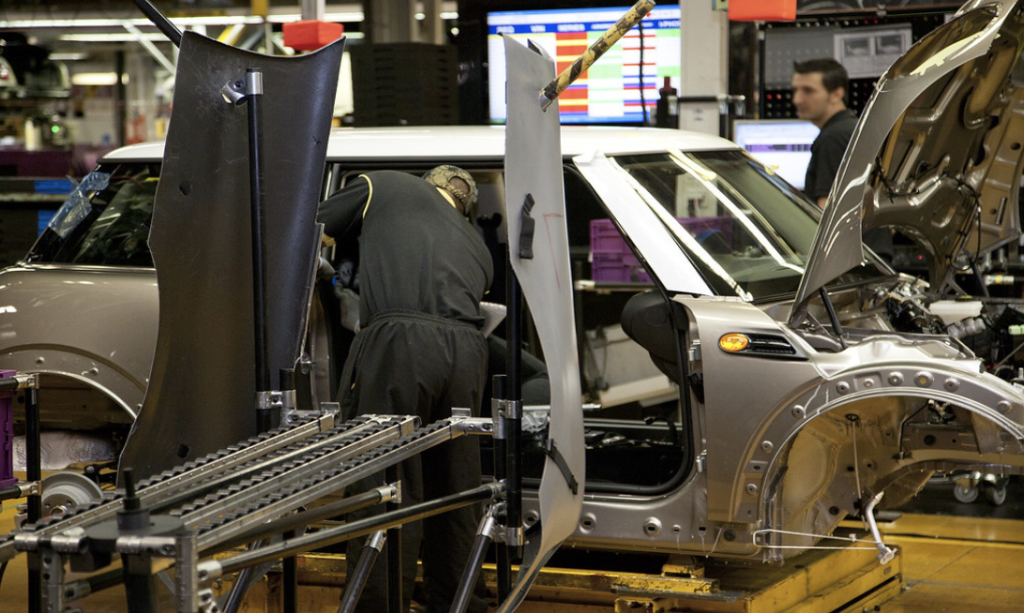Waterjet Cutting in Automotive Manufacturing: A Revolution in Precision and Efficiency
Share
Share

In the dynamic realm of automotive manufacturing, the advent of waterjet cutting technology has emerged as a pivotal innovation. This cutting-edge method, renowned for its precision and versatility, has revolutionized the way automotive components are fabricated. Waterjet cutting, distinguished by its use of high-pressure water streams, often combined with abrasive materials, allows for intricate cutting tasks without the thermal stress typically associated with conventional cutting techniques.
Waterjet cutting is a process that employs a jet of water, propelled at supersonic speeds, to cut a wide array of materials. This technique can be augmented with abrasives to enhance cutting power, especially for harder materials.
Basic Principles of Waterjet Cutting:
High-Pressure Water Stream: The core component is a stream of water pressurized to extreme levels.
Abrasive Augmentation: For tougher materials, abrasives like garnet are added to the water stream.
Precision Cutting: Allows for accurate cuts without affecting material integrity.
No Heat Impact: Unlike thermal cutting methods, waterjet cutting does not induce heat stress.
Process Breakdown:
In the automotive industry, waterjet cutters are applied for components requiring high precision and smooth finishes. The process involves directing a high-pressure water jet, possibly mixed with abrasives, at the material, resulting in precise and clean cuts.
Main Stages of Waterjet Cutting in Automotive Manufacturing:
Design Input: Feeding the component’s design into the waterjet machine’s computer.
Material Positioning: Placing the raw material on the cutting bed.
Cutting Execution: The high-pressure jet precisely follows the design contours.
Final Inspection: Ensuring the cut pieces meet the stringent automotive standards.

Advantages Overview:
Waterjet cutting stands out for its numerous benefits in automotive manufacturing. Its ability to cut diverse materials with precision and minimal waste makes it an invaluable tool.
Key Benefits:
Precision: Achieves exact cuts for intricate designs.
Versatility: Can cut a variety of materials from metals to composites.
Material Preservation: Minimizes material waste and damage.
Safety: Eliminates risks associated with heat-based cutting methods.
Precision Aspects:
The precision of waterjet cutting lies in its ability to produce smooth, exact cuts without affecting the material’s inherent properties. This is crucial for automotive parts where even minor deviations can be critical.
Complex Design Capability:
One of the standout features of waterjet cutting is its capacity to handle complex designs. From intricate gears to delicate decorative elements, it can cut with a level of detail unattainable by traditional methods.
Overview of Materials:
Waterjet cutting’s versatility allows it to handle a variety of materials used in automotive manufacturing.
Main Materials:
Metals: Including steel, aluminum, and alloys.
Composites: Such as carbon fiber and fiberglass.
Plastics: Ranging from rigid to flexible varieties.
Ceramics: Utilized for specific high-strength components.

Design and Prototyping Impact:
In the design and prototyping phase, waterjet cutting accelerates the process by providing rapid, precise cuts, enabling quick iterations and modifications.
Technology Comparison:
Waterjet cutting stands alongside other cutting technologies, each with its own set of pros and cons.
Precision Comparison:
When it comes to precision, waterjet cutting rivals laser cutting accuracy, especially for thicker materials where laser may struggle.
Efficiency Analysis:
For certain materials and thicknesses, waterjet cutting offers superior efficiency compared to plasma cutting, especially in terms of cut quality and material versatility.
Safety Measures:
Despite its high-pressure nature, waterjet cutting is relatively safe, with specific guidelines ensuring operator safety.
Safety Tips:
Proper Shielding: To protect from high-pressure streams.
Routine Inspections: Ensuring machinery is in optimal condition.
Training: Comprehensive training for operators.

Machine Overview:
A waterjet cutter comprises several key components, each playing a crucial role in its operation.
Maintenance Tips:
Regular Cleaning: To prevent blockages and wear.
Component Checks: Regular inspection of nozzles and pumps.
Abrasive Management: Ensuring consistent quality and supply.
Maintenance Guide:
Routine maintenance is vital for the longevity and efficiency of waterjet cutters, involving regular checks and replacements of critical parts.
Cost Breakdown:
The costs associated with waterjet cutting vary, but it can offer long-term savings through material efficiency and reduced waste.
Price Ranges: Varies based on machine type and operation scale.
Cost-Saving Tips: Efficient material usage and regular maintenance can reduce overall costs.
Cost-Effectiveness Comparison:
When compared to other cutting technologies, waterjet cutting can be more cost-effective, especially for complex, multi-material projects.

Emerging Trends:
The future of waterjet cutting in automotive manufacturing looks promising, with ongoing innovations enhancing its precision, efficiency, and material capabilities.
Real-World Examples:
Several automotive manufacturers have successfully integrated waterjet cutting into their production processes, showcasing its versatility and efficiency.
Notable Case Studies:
High-Performance Vehicle Parts: Utilizing waterjet for complex, high-tolerance components.
Custom Automotive Designs: Enabling unique, customized parts production.
Rapid Prototyping: Accelerating the design process in automotive engineering.
Waterjet cutting has carved a niche in automotive manufacturing, known for its precision, versatility, and material-friendly nature. As the industry continues to evolve, this technology is poised to play an increasingly vital role in shaping the future of automotive production, driven by ongoing advancements and a commitment to efficiency and innovation.
Leave a Reply